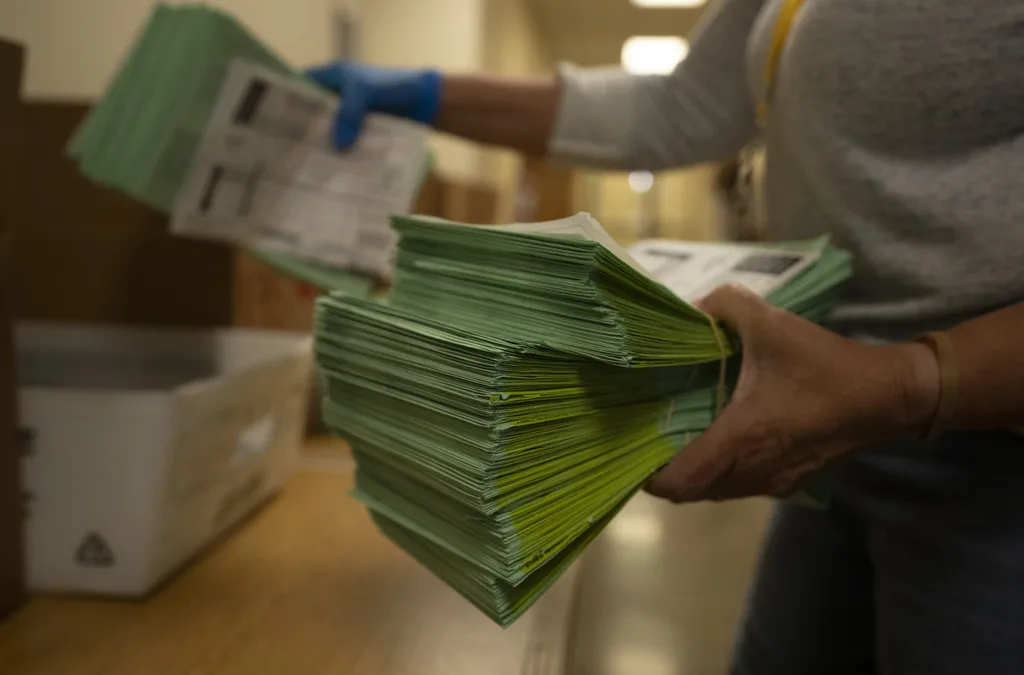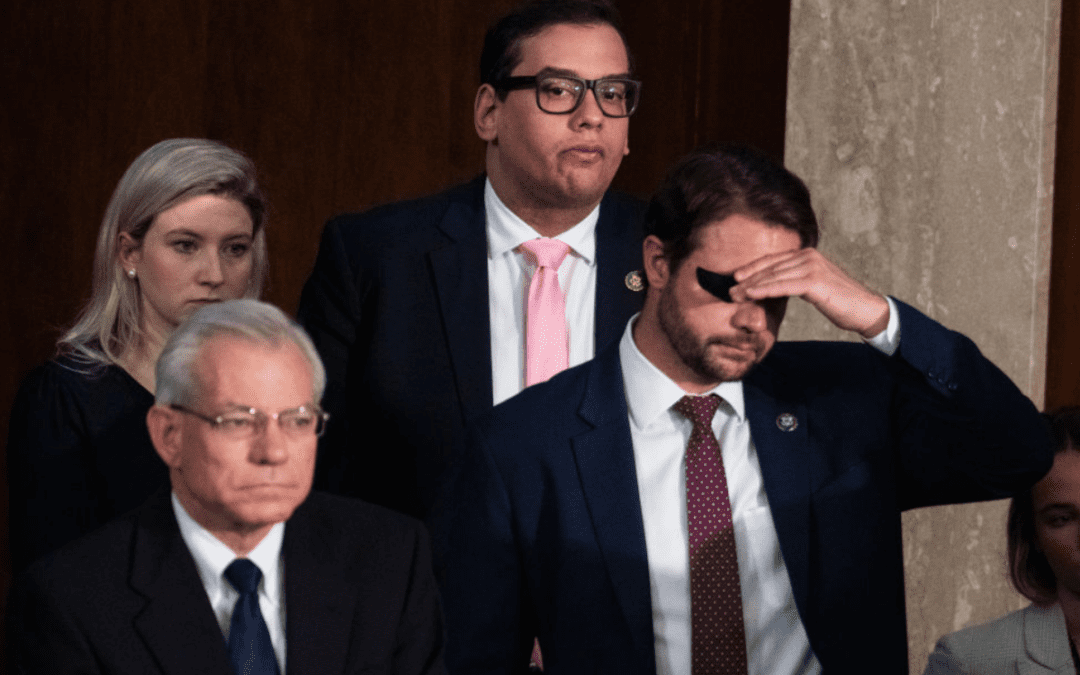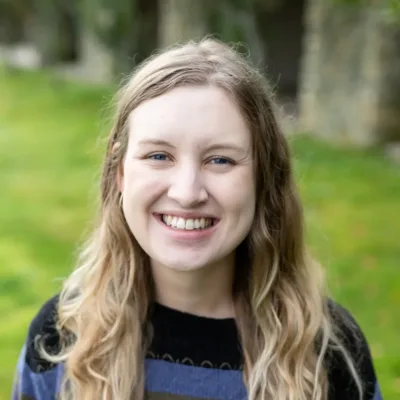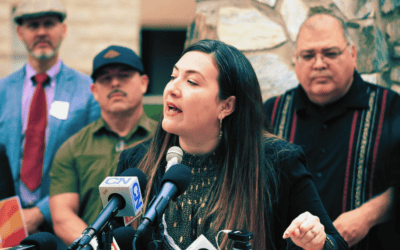The Human Services Campus in downtown Phoenix is working to accommodate people amid social distancing guidelines and an increasing number of coronavirus cases.
One of the first things Arizonans were told to do when the coronavirus outbreak began was to stay at home. Then in late March, Gov. Doug Ducey issued a stay-at-home order, requiring people to stay inside except for essential services.
But what are people without a home supposed to do to stay safe?
Amy Schwabenlender, executive director of the Human Services Campus in downtown Phoenix, told The Copper Courier the pandemic is underscoring how urgent the affordable housing crisis is. According to the National Alliance to End Homelessness, there are more than 6,000 people experiencing homelessness in Maricopa County on a given night.
“For years, I’ve been working on this issue and saying housing is healthcare,” she said. “And I think this pandemic underscores that, because the first thing we’re all told to do is stay home, and if you have no home, we’re basically saying you can’t be healthy.”
The Human Services Campus is a 13-acre facility with 16 nonprofit organizations working together to serve people experiencing homelessess. Schwabenlender said the campus sees 800 to 1,000 people a day, looking to access temporary shelter, jobs programs, health care, spiritual support, meals, and more.
“Our focus is to meet all of those very basic needs and work with people on a placement to permanent housing,” she said. “And our ultimate outcome is that we help everyone be on path from their experience of homelessness to permanent, affordable, safe housing.”
RELATED: Renters Get A Coronavirus Reprieve From Evictions in Arizona. Here’s How It Works.
Schwabenlender said due to the pandemic, some partner organizations have had to pull out or significantly reduce their hours. For example, the group that usually meets with people to explain leases and walk them through signing one is working to set up a virtual program, as they are no longer seeing clients in person.
But, importantly, the campus is still offering health care.
Schwabenlender said people who come to the shelter’s doors are given a medical assessment and has their temperature taken. Anyone showing COVID-19 symptoms is referred to the on-campus health provider who provides more in-depth tests.
The campus also offers an isolation area for people who are tested for coronavirus and awaiting results. People who do test positive can also stay at the campus in isolation for their two-week quarantine period.
But as the campus makes room for these isolation areas, staff are forced to reduce other spaces. Schwabenlender said Central Arizona Shelter Services usually has room for about 470 to sleep in its space on campus. Now, there’s only room for about 340 people.

The campus has also had to block off the dayroom, where people have access to restrooms and phone charging. This space has been converted to an area where up to 47 people who are not symptomatic but in higher-risk categories (seniors and people with underlying medical conditions) can distance themselves from the population.
The campus has also changed the way it serves food.
“Meals have stopped being in congregate dining halls,” Schwabenlender said. “They’ve gone to serving things in to-go containers or a sack lunch, and everyone’s sitting outside 6 feet apart.”
Schwabenlender said amid all these changes, the campus has been posting information about COVID-19 and meeting with people to explain what’s going on. Many people experiencing homelessness don’t have much access to news and other information without the internet, so the campus tries to fill that gap.
Schwabenlender said the people the shelter serves are often very scared.
“[They’re thinking,] ‘I’m sleeping in a room with 50 other people. I don’t know why they’re coughing. I don’t know how sick they are. Am I going to get sick?’” she said. “So we spend a lot of time just trying to be a calming influence on people.”
The campus is also turning its attention to people who are living unsheltered and may not be seeking services, especially the hundreds of people living in tents along Madison Street.

“Our next effort will be to figure how to do education with those folks and maybe offer them alternative space somewhere else if we can find it,” Schwabenlender said. “But some of those folks aren’t even leaving their tents because they’re scared and they don’t know what’s going to happen.”
“In some ways, for our population, this is nothing new. It’s just another wrinkle in surviving homelessness; it’s just another stressor – another thing that’s happening that they can’t control,” she added.
Schwabenlender said she hopes the coronavirus outbreak helps people understand why it’s so urgent that homelessness be addressed in Maricopa County.
“I think we’re at the core of the conversation on why a broader plan is needed,” she said. “I think this pandemic really exposes and puts a light on that one group of nonprofits with ‘x’ number of shelter beds that cannot shelter every person experiencing homelessness in Maricopa County.”
For anyone who wants to help the campus continue its services at this time, Schwabenlender recommended making a donation online or checking out the shelter’s Amazon wishlist. The campus also held a drive-by donation drive last weekend and will hold another on April 18.
Looking for the latest Arizona news in this time of crisis? Sign up for our daily newsletter and have it delivered straight to your inbox.
Support Our Cause
Thank you for taking the time to read our work. Before you go, we hope you'll consider supporting our values-driven journalism, which has always strived to make clear what's really at stake for Arizonans and our future.
Since day one, our goal here at The Copper Courier has always been to empower people across the state with fact-based news and information. We believe that when people are armed with knowledge about what's happening in their local, state, and federal governments—including who is working on their behalf and who is actively trying to block efforts aimed at improving the daily lives of Arizona families—they will be inspired to become civically engaged.


He said what? 10 things to know about RFK Jr.
The Kennedy family has long been considered “Democratic royalty.” But Robert F. Kennedy, Jr.—son of Robert F. Kennedy, who was assassinated while...

Here’s everything you need to know about this month’s Mercury retrograde
Does everything in your life feel a little more chaotic than usual? Or do you feel like misunderstandings are cropping up more frequently than they...

Arizona expects to be back at the center of election attacks. Its officials are going on offense
Republican Richer and Democrat Fontes are taking more aggressive steps than ever to rebuild trust with voters, knock down disinformation, and...

George Santos’ former treasurer running attack ads in Arizona with Dem-sounding PAC name
An unregistered, Republican-run political action committee from Texas with a deceptively Democratic name and ties to disgraced US Rep. George Santos...





